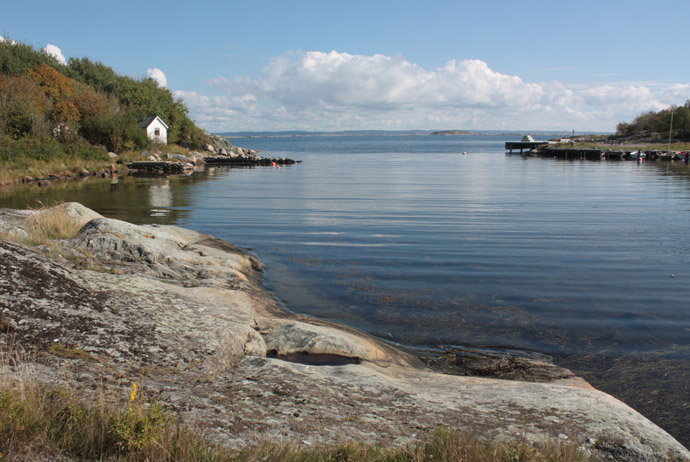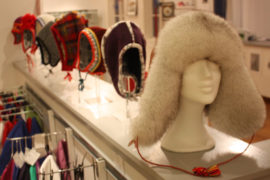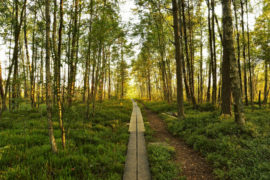Sweden has a reputation for being expensive. In many ways it’s deserved, but even with the relatively high cost of living, it’s possible to get by without spending a fortune.
We put together this guide to help you get an idea for what everyday products and services cost.
Whether you’re planning on visiting Sweden for the weekend, or relocating there for good, it should make it easy to see how the prices in Sweden compare vs those in other countries like the UK and US.

Some of the prices listed here are aimed at short-term visitors (like hotels, for example), while others are more useful for expats, students and businesspeople who are staying for longer and need to consider paying for things like haircuts, electricity bills and gym memberships.
It goes without saying that all of the prices we’ve included here are approximations that are subject to small fluctuations, but we’ll keep an eye on them over time and make sure they’re updated if they change considerably.
Just click one of the following headings to hop to a section:
Accommodation
Food
Transport
Sightseeing
Entertainment
Alcohol and tobacco
Utilities
Healthcare
Clothing
For more on what you can expect to spend if you’re coming to Sweden on holiday, see our guide to what’s a good daily budget for Sweden.
Accommodation
Paying for somewhere to stay will take up a big chunk of your total spend in Sweden, especially if you’re in one of the big cities like Stockholm or Gothenburg, where hotel prices are high and accommodation shortages are a major problem.
Even with money, finding a flat to rent long-term can be difficult, and locals have been known to spend 10–20 years (yes, years) waiting in queuing systems for rental accommodation.
At the other end of the scale, properties in rural Sweden (especially in the north of the country) are usually easy to rent and can be excellent value.
| Short-term | Price per night |
|---|---|
| Hostel bed in a shared dormitory | 180–300 SEK |
| Double room in a budget hotel | 700–1000 SEK |
| Double room in a luxury hotel | 3000–6000 SEK |
| One-bedroom apartment via Airbnb | 800–1500 SEK |
| Basic four-bed cottage in rural area | 800–2500 SEK |
| Long-term | Rent per month |
| One-bedroom apartment (city centre) | 14,000–20,000 SEK |
| One-bedroom apartment (suburbs) | 10,000–15,000 SEK |
| Student dorm/apartment | 4000–7500 SEK |
| Buying | Approx cost |
| One-bedroom apartment (city centre) | 3m–4.5m SEK |
| One-bedroom apartment (suburbs) | 1.9m–3m SEK |
Generally speaking, Stockholm and Gothenburg (and to some extent also Malmö) are the most expensive Swedish cities to stay in, though you’ll find that rates for hotels are fairly uniform across the country.
Hotels and hostels in rural Lapland can be just as costly as those in the capital.
Hotel sites like Booking.com are handy for finding low prices on short-term accommodation, but for longer stays it’s worth checking out sites such as Airbnb.
Our guide to accommodation in Sweden has more on finding low prices.
Food
If you stick to cooking for yourself and buying the bulk of your food at supermarkets, eating in Sweden is surprisingly cheap.
Cheap foreign supermarkets such as Lidl have appeared in Sweden in recent years, making it easier to stock up on budget groceries.
Swedish brands like ICA, Hemköp and Coop can be reasonably priced too, but try to avoid smaller branches in the centre of cities like Gothenburg and Stockholm, which tend to be more expensive than larger, out-of-town stores.

Generous wages for restaurant staff and sky-high taxes on alcohol mean that eating out in Sweden is considerably more expensive.
Fortunately the tipping culture is not as ingrained as in other countries – our guide to tipping in Sweden has more on when to leave a little extra for staff at restaurants and hotels.
| Supermarket products | Price |
|---|---|
| Milk (1 litre carton) | 15 SEK |
| Loaf of bread | 30–40 SEK |
| Pack of six eggs | 20 SEK |
| 1kg of cheese | 80–150 SEK |
| 1kg of meatballs | 65–115 SEK |
| Snacks/on the go | Price |
| Takeaway coffee | 30–45 SEK |
| Swedish hot dog | 45–65 SEK |
| Bottle of water | 25–30 SEK |
| Can of soda (33cl) | 15 SEK |
| Falafel wrap | 85–110 SEK |
| Takeaway salad | 100–130 SEK |
| Hamburger meal | 90–110 SEK |
| Restaurants | Price |
| Meal for two (mid-range restaurant) | 800–1000 SEK |
| Meal for two (high-end restaurant) | 1600–2000 SEK |
| Glass of house wine | 80–100 SEK |
| Bottle of beer (33cl) | 70–100 SEK |
| Cocktail | 120–170 SEK |
You’ll find recommendations for specific places to eat in our destination guides. If you’re looking to keep things on a budget, check out our guides to finding cheap food in Stockholm, Lund and Gothenburg.
Transport
Public transport in Sweden is surprisingly good value. Even long journeys that snake through hundreds of kilometres of wild scenery can cost less than commuting to work in other European countries (England, we’re looking at you).
Renting a car in Sweden can quickly become expensive, though, with high daily costs and plenty of tax on fuel.
| Long-distance transport | Price |
|---|---|
| Domestic flight Stockholm–Gothenburg | 800–2500 SEK |
| Domestic flight Stockholm–Kiruna | 1300–3500 SEK |
| Bus Stockholm–Gothenburg | 250–400 SEK |
| Bus Malmö–Gothenburg | 170–250 SEK |
| Train Stockholm–Gothenburg (2nd class) | 225–700 SEK |
| Train Stockholm–Kiruna | 930–1700 SEK |
| City transport | Price |
| Stockholm subway/bus (one-way ticket) | 39 SEK |
| Stockholm subway/bus (30-day pass) | 970 SEK |
| Gothenburg tram (one-way ticket) | 35 SEK |
| Malmö bus (one-way ticket) | 31 SEK |
| 15-min taxi ride in central Stockholm | 270–400 SEK |
| Driving | Approx cost |
| Car rental (one day) | 900–1100 SEK |
| Petrol (1 litre) | 20–24 SEK |
Until around 15 years ago there was little competition for the state-owned train company SJ.
Now there are several privately run companies in the train game, such as MTR Express (which operates on the busy Stockholm–Gothenburg route) and Öresundståget (which covers the stretch from Gothenburg–Copenhagen).
You’ll find up-to-date prices for most services, except those operated by MTR Express, on the Omio website.
Two main privately run bus companies operate long-distance bus routes in Sweden: Flixbus andVy bus4you, which also runs Vy express buses.
These services are supplemented by an excellent network of public buses, which connect towns and villages across the country.
Rates aboard long-distance buses are extremely good and even in rural areas, where there’s often just one company running services, it’s unlikely you’ll be left feeling short changed.
Domestic flights can be expensive, especially on routes that are still monopolised by SAS.
Norwegian now competes with SAS on some of the most popular routes, such as the summer-only Stockholm–Kiruna route, which means that prices can be more competitive.
City transport is usually excellent value and services tend to be efficient and reliable, even in busy cities like Stockholm and Gothenburg.
Unless you’re really stuck, taxis are best avoided – prices are uniformly high and reports of visitors getting ripped off are not uncommon.
Uber is available in Stockholm and Gothenburg.
Sightseeing
Sightseeing in Sweden can quickly get expensive, though you’ll find there are plenty of free things to do in most of the big cities.
See our guides to free museums in Stockholm and 110 cheap and free things to do in Stockholm, if you need a bit of inspiration.
As a general rule, state-run museums and galleries are cheaper than privately owned ones.
Another tip, if you want to keep the cost of sightseeing down: avoid organised boat and bus tours, and stick to public transport, or buy a Stockholm City Pass, which has boat and bus tours included.
To see if the Stockholm City Pass can save you money, read our guide on the Stockholm Go City Pass: is it worth buying?
| Stockholm | Price |
|---|---|
| Two-hour boat tour | 320 SEK |
| 24hr hop-on, hop-off bus tour | 370 SEK |
| One-hour walking tour | Free–250 SEK |
| Admission to Vasa Museum | 170 SEK |
| Gothenburg | Price |
| 24hr hop-on, hop-off bus tour | 319 SEK |
| Archipelago boat tour | 380 SEK |
| Admission to Liseberg amusement park | 95–185 SEK |
| Malmö | Price |
| Admission to Moderna Museet | 50 SEK |
| Swim/sauna at Riberborgs Kallbadhus | 80 SEK |
| Swedish Lapland | Price |
| Dog sledding trip (90 min) | 1500–2000 SEK |
| Day pass for the Icehotel | 350 SEK |
| Visit to the Aurora Sky Station in Abisko | 995 SEK |
Entertainment
Going out in Sweden can be costly, thanks to high ticket prices for concerts, shows and even film screenings.
Nightclubs can work out expensive too, and that’s even if you keep a close eye on your alcohol intake – admission fees of 200 SEK or more are fairly standard.
There may be an additional charge of around 20 SEK for hanging up your coat (often this is mandatory).
| Entertainment | Price |
|---|---|
| Cinema ticket | 150 SEK |
| Ticket for a pro ice hockey game | 250–600 SEK |
| Entry to a nightclub | 200–350 SEK |
| Game of bowling for a family (1hr) | 395–450 SEK |
Alcohol and tobacco
Smoking remains comparatively cheap in Sweden, considering the country’s reputation for high taxes.
Sweden is also one of the few places in Europe where snus is legal – it’s a moist tobacco product that’s stuffed under the top lip, either in powder form or in teabag-like pouches.
Alcohol is another story; prices are very high in bars and restaurants, and just one government-owned chain of stores – Systembolaget – has the ability to sell drinks that are stronger than 3.5%.
| Alcohol | Price |
|---|---|
| Bottle of beer at Systembolaget | 15 SEK and up |
| Bottle of wine at Systembolaget | 80 SEK and up |
| Draft beer at a bar | 70 SEK and up |
| Glass of wine at a bar | 70 SEK and up |
| Bottle of beer at a nightclub | 100 SEK and up |
| Cocktail at a nightclub | 160 SEK and up |
| Tobacco | Price |
| Packet of cigarettes | 70 SEK and up |
| Snus | 50 SEK and up |
Utilities and contracts
If you’re staying in Sweden long term and have your own flat, you’ll need to think about bills.
Mobile phone contracts will give you the best deals on calls and texts, but a good short-term solution is to get yourself a pre-pay Swedish sim card.
Our sim card guide has more on how to find a deal that suits you.
| Utilities | Approx monthly cost |
|---|---|
| Utilities bill (electricity, gas water, services, etc) one-bed apartment | 1100 SEK |
| Broadband access (10mb/sec) | 330 SEK |
| Seven-day pay-as-you-go 5GB Sim card | 60 SEK and up |
| Extras | Approx cost |
| Gym membership | 390 SEK (per month) |
| Basic haircut | 340 SEK |
Healthcare and personal items
Healthcare in Sweden is not free, but US citizens will find it considerably cheaper than back home.
You can expect to pay between 100–300 SEK for a GP appointment, or 200–350 SEK for a specialist appointment, such as a paediatrician.
UK citizens may be able to use a valid EHIC, though you should always check the latest situation before travelling.
Either way, health insurance is a must. World Nomads provides travel insurance for travelers in over 100 countries. As an affiliate, we receive a fee when you get a quote from World Nomads using this link. We do not represent World Nomads. This is information only and not a recommendation to buy travel insurance.
| Health | Price |
| Dental check-up (under 24s) | Free |
| Basic dental check-up (24 and over) | 500–800 SEK |
| Packet of paracetamol (pack of 20) | 22 SEK |
| Plasters (30, assorted sizes) | 52 SEK |
Clothing and personal items
Generally speaking clothes are quite pricey in Sweden, especially if you go for the designer brands and quality items.
You can still find cheap and cheapful clothing, however, at discount stores and supermarkets.
| Clothing and personal items | Price |
| T-shirt (H&M) | 150 SEK |
| Levi jeans | 600–1000 SEK |
| Shampoo | 80–100 SEK |
| Deodorant | 50–80 SEK |
Need more tips on planning your trip to Sweden? Start here.
FAQ
What is the cost of living like in Sweden compared to the UK?
Sweden has a reputation for being incredibly expensive and, indeed, for some things it is.
Because of the high wages in Sweden anything that involves service, such as eating out in a restaurant or drinking in a bar, will almost certainly be more more expensive than in the UK.
However, other things such as long-distance public travel are cheaper than in the UK.
And renting or buying an apartment in Sweden is considerably cheaper than in the UK on average.
Is the cost of living in Sweden higher than in the US?
Actually, no. Despite its reputation as a pricey country, the cost of living in Sweden is around 10% cheaper than in the US.
And if you compare Stockholm with, say, New York, living in the Big Apple is 40 % more expensive.
And although restaurant prices are slightly higher in Sweden than in the US, since the Swedes don’t tend to tip, you needn’t factor in the extra 20–25% service charge that Americans would normally pay.
However, US visitors will find fuel, in particular, very expensive – it costs twice as much in Sweden as back home.
Is London cheaper than Stockholm?
Both London and Stockholm are pricey cities, but again, perhaps surprisingly, the cost of living in Stockholm is actually about 29% lower than in London.
Much of this is down to the higher costs of renting and buying property in London, and higher transport costs.
What is the cost of living in Gothenburg like compared to London?
Gothenburg is an attractive popular city to live in and, unsurprisingly, it is cheaper than London for almost everything, with the exception of groceries.
Overall the cost of living in Gothenburg is around 35% lower than in London.
What is the cost of living like in Sweden for international students?
Students should budget on paying around 9500 SEK a month for their accommodation, food, travel, internet and going out expenses.
University tuition fees can range from 80,000–295,000 SEK a year depending on the course and university.
See also:
Is Sweden expensive?
How to do Sweden on a budget
Backpacking in Sweden










New York is not the capital of the US
prices above include all tax or tax is extra?? please clear
Hi Yo! The prices include tax 🙂
I need to know these important facts about living in Sweden. My hockey team just got back to me today, Dec. 27, 2016, with regards to only being able to cover my rent and housing utilities during my stay from Jan. 1, 2017, until April or May. If anybody has information on how to live cheaply and how to make my money last. Please invoice me. rjcigile24@gmail thank you!